sofco Enters a New Chapter Under New Leadership and Ownership
When your planning system isn’t optimised to suit your specific needs, it can often feel like you don’t know which way to turn. You don’t want to lose the elements of your process that work well for you, simply because they are so many aspects which don’t.
That’s where an End-to-End planning solution provider, like sofco, can be of great benefit. An expert team, like ours, will offer you best-of-breed advice, detailing methods you can adopt to optimise your existing solution, plugging the gaps in your supply chain planning.
Define “optimise”
Your system is working, in the general sense of the word. In simple terms, you enter data, it’s processed, you receive a forecast, or a production schedule is planned.
But is your system giving you everything it could, and quite frankly, everything it should?
By optimised, we mean a system that responds to your every need when you ask it to, a system that doesn’t cloud your insights or overwhelm you with data and inefficiencies. We mean a system that presents to you what you need in clear visuals, occupying very little of your time as it does the work for you behind the scenes, giving you the freedom to focus on strategy and results.
Sound idealistic?
We prefer to call it realistic because sofco Planning does exactly that.
Your Existing System
Imagine a planning system that would integrate your existing ERP system, and possibly even a module or two of Planning Software, perhaps S&OP, Demand Planning, Supply Planning, or a competitor’s equivalent, but more so, would prioritise the aspects you need, tailored entirely to your business goals.
There is a common misconception that End-to-End means all or nothing which can be intimidating, and we’re here to tell you this isn’t the case. We can work with other planning systems you have already implemented, drawing from their data and structure to drive forecasts. It doesn’t have to be us or them, all or nothing. A successful planning system is a planning system that works for you and your business needs.
Which brings us onto the main benefit of working with a development house, like sofco:
Our solutions are tailored to you.
Out-of-the-box certainly has its pros but for large-scale companies looking for a long-term success, you need a solution that’s more configurable and responsive to your specific needs.
By implementing a solution like sofco Planning, we can tailor your dashboards to be KPI and exceptions driven, designed to show you exactly what you need to know and when you need to know it. No more sifting through data searching for the golden nugget. You can spend your new free time developing strategies on how to maximise your profits.
Let’s talk benefits
An optimised planning system won’t just make your day job easier; it will also give you several real-term tangible benefits from improved customer satisfaction to reduced costs.
Let’s look at three in detail.
- Streamlined Operations
- An optimised planning software system will streamline your workflows, as it will assist you in looking for ways to automate repetitive tasks, eliminate unnecessary steps in the process, and reduce manual input. This will save you time and reduce the risk of errors, allowing your team to focus on higher-value activities.
- Increased data accuracy
- Accurate data is critical to the success of any planning software system. An optimised system with data validation checks will improve data accuracy, along with improving data entry processes, and integrating with other systems to reduce data silos. High-quality data can help you make better decisions and optimize your workflows.
- Enhanced reporting abilities
- Reporting is an essential part of any planning software system. With dashboards and visualisations from graphs to pie charts can help you quickly identify trends or issues and make data-driven decisions, all while giving you better insights into your business operations.
Optimisation strategies to consider
Implementing a solution designed to optimise your existing systems isn’t like waving a magic wand, it takes consideration, collaboration, and a willingness for it to work.
Let’s look at three immediate ways you can begin to optimise your system.
- Identify areas for improvement
- Gather feedback from employees, analyse data from the system, or conduct a thorough review of the software itself. Look for bottlenecks or inefficiencies in the process that could be improved with better software functionality or an upgrade to your system design.
- Prioritise these improvements
- Once you have identified areas for improvement, prioritise them based on their impact on your business. Consider the cost and effort required to implement each improvement and weigh it against the potential benefits, helping you focus on the most significant issues and make the most of your resources.
- Invest in training and support
- Get the most out of your investment and your system. With support from your existing providers, ensure that your employees are fully trained on the system’s features and capabilities and provide ongoing support to help them troubleshoot issues or answer questions.
If you want more detail on strategies to ensure project success, check out our article: How to avoid Digital Transformation failure.
Summary
Optimising your existing planning system to deliver on your needs requires a strategic approach. By adopting the above strategies, and working with a software house, like sofco, that make it their mission to understand your needs and deliver on your outcomes, you can ensure your planning system is operating at peak efficiency and delivering the maximum benefits to your business.













































